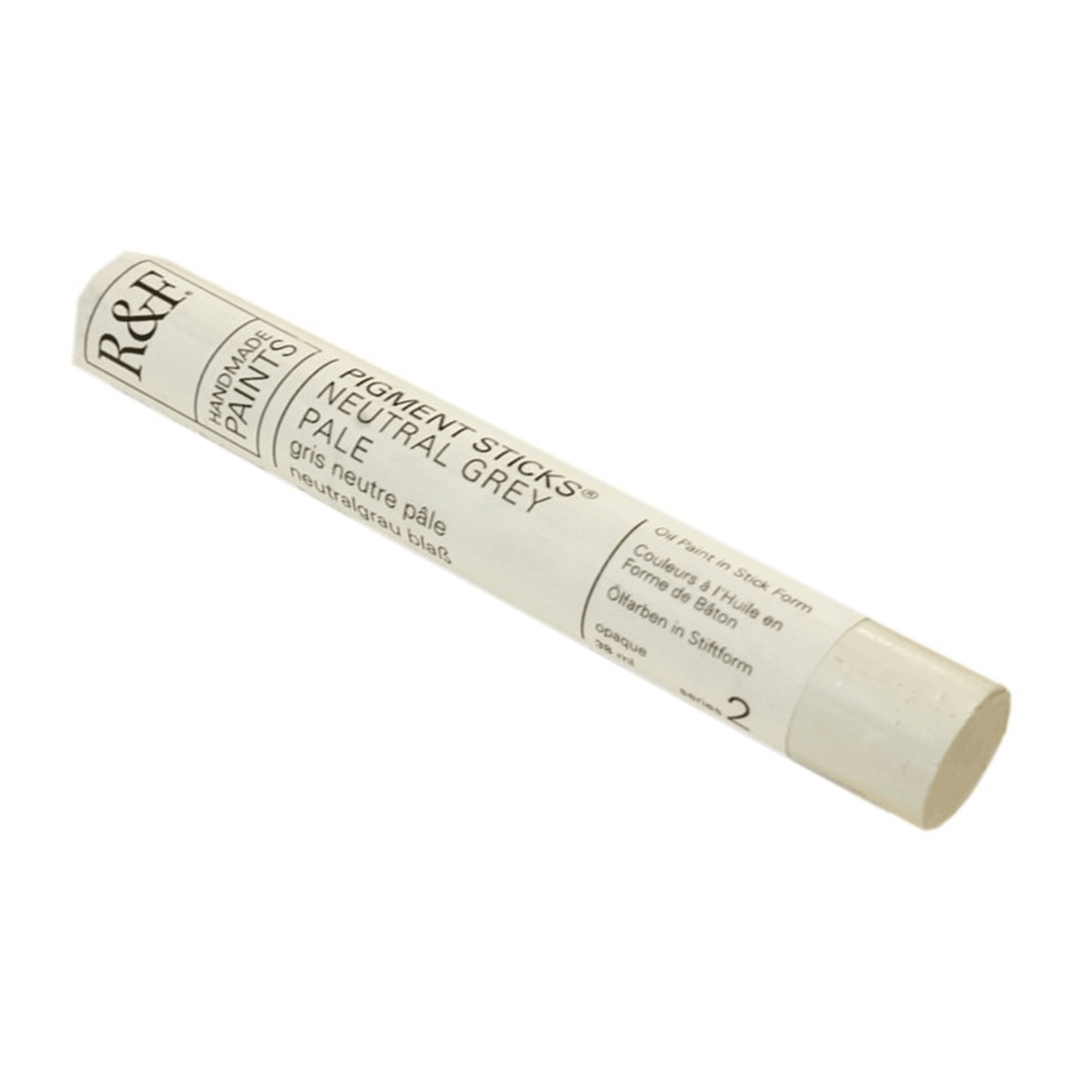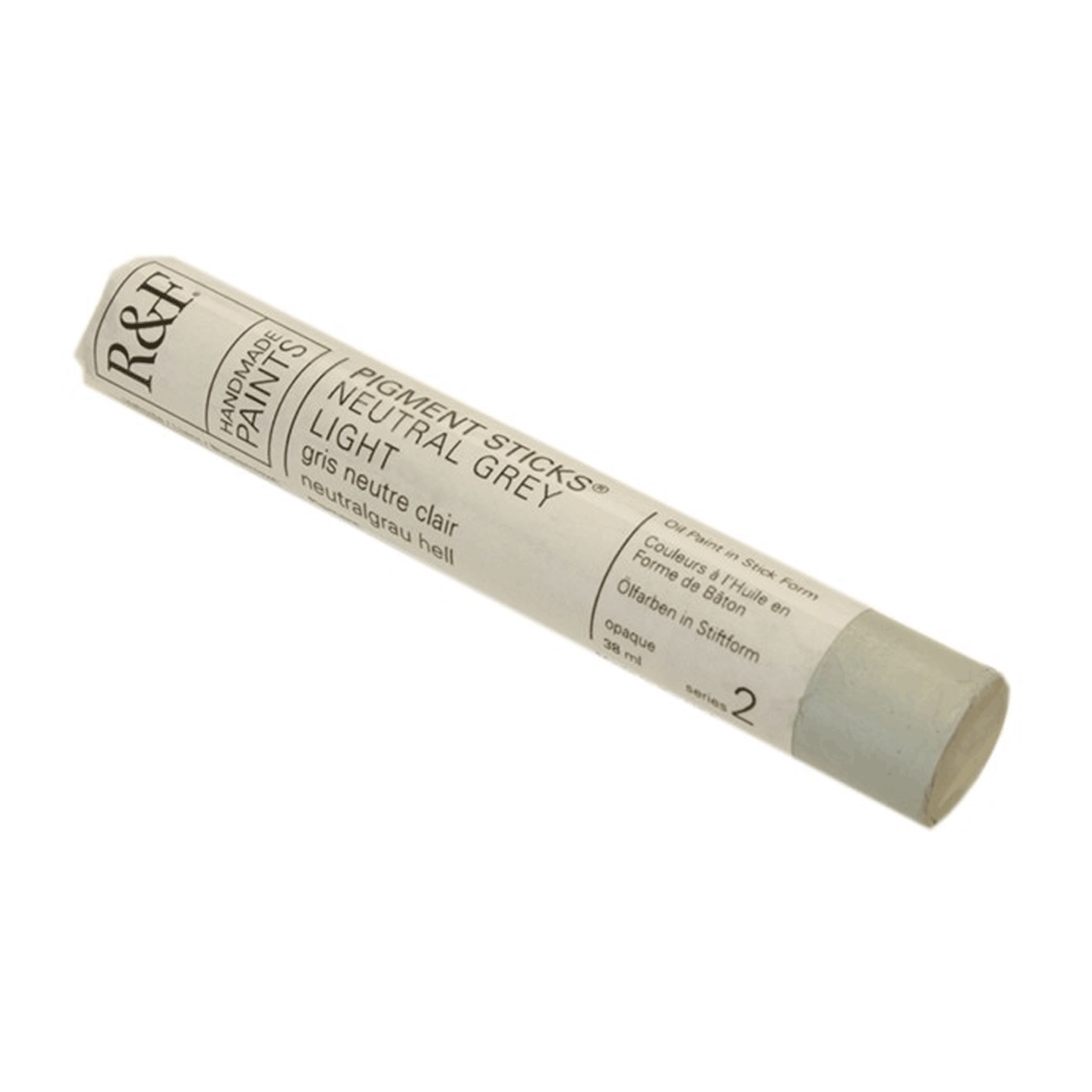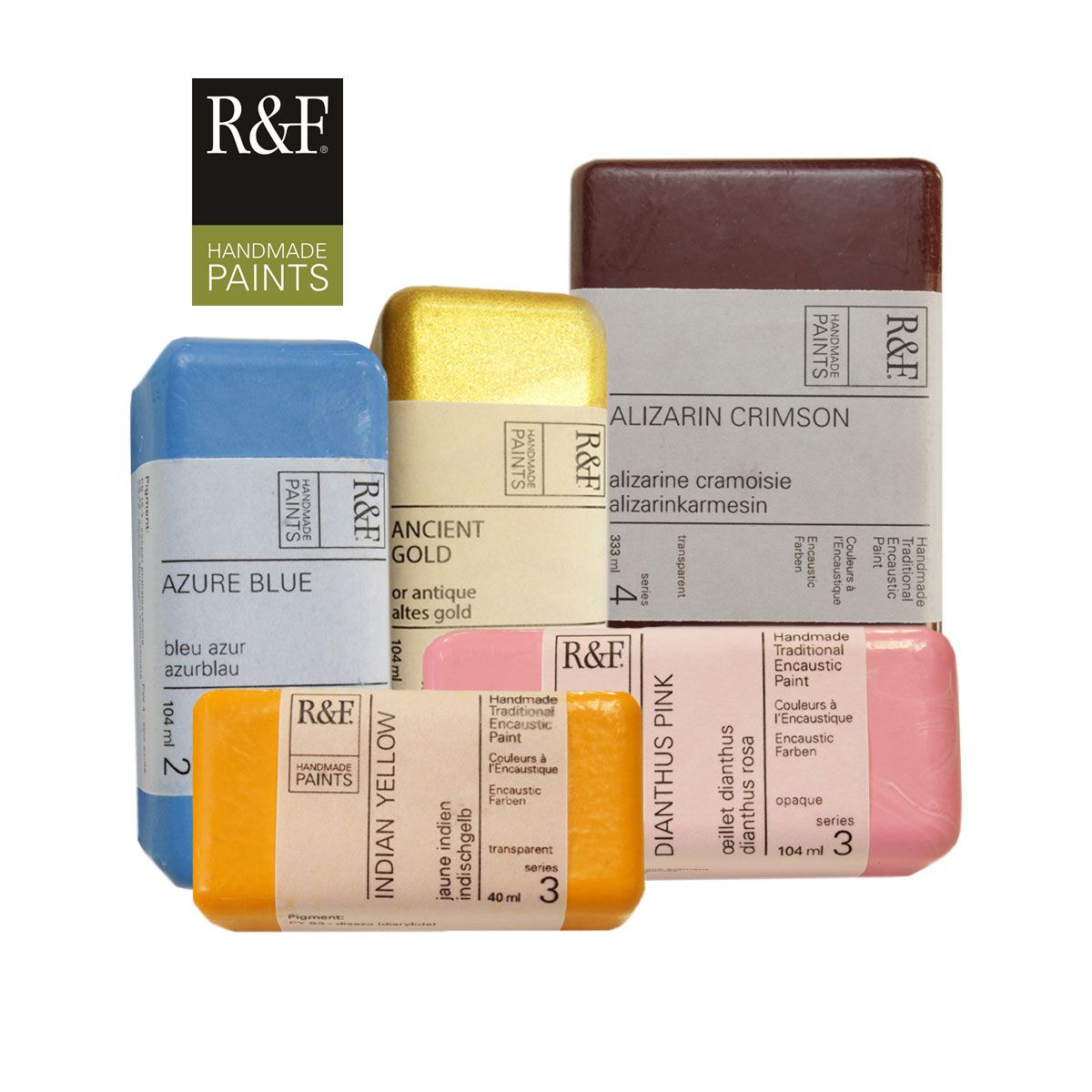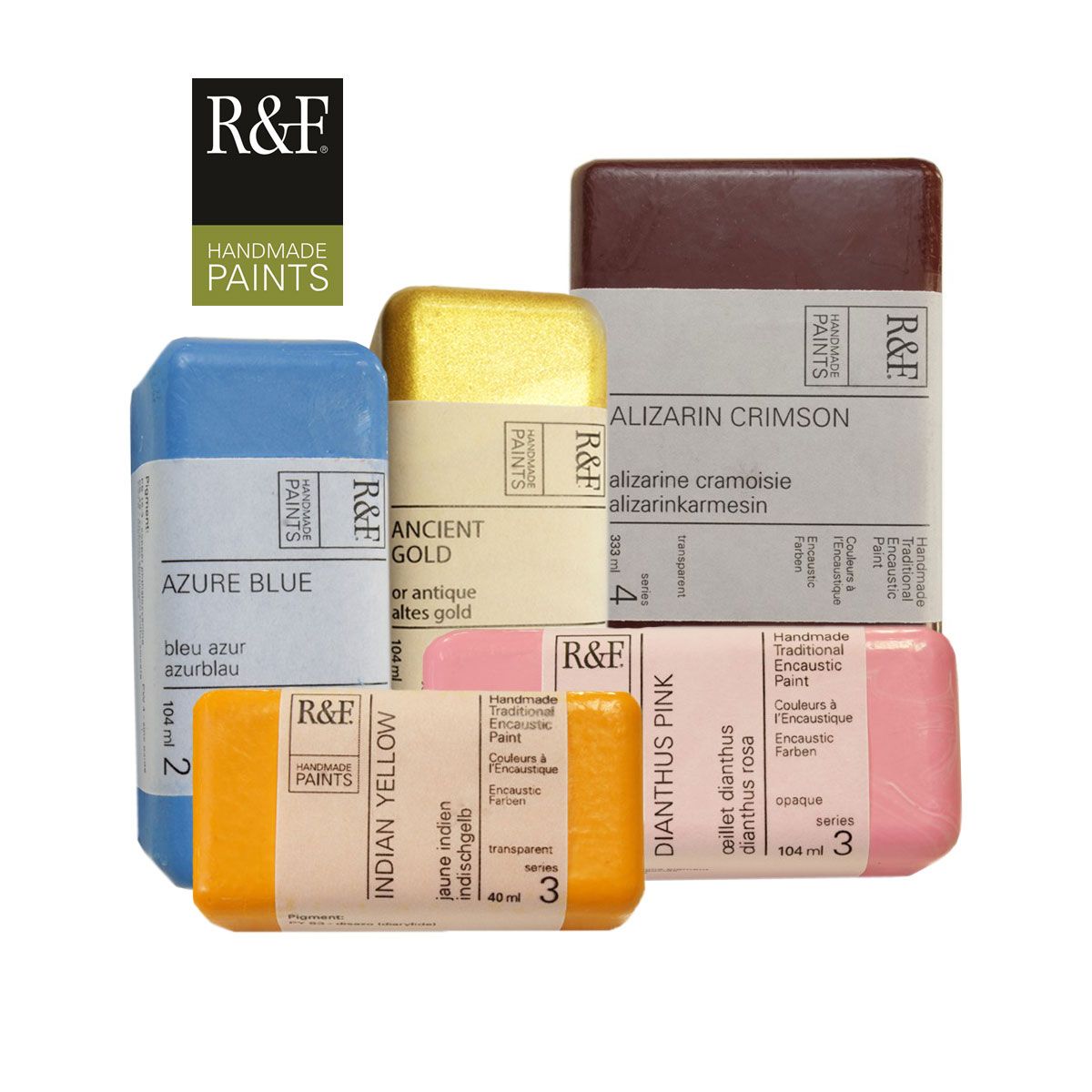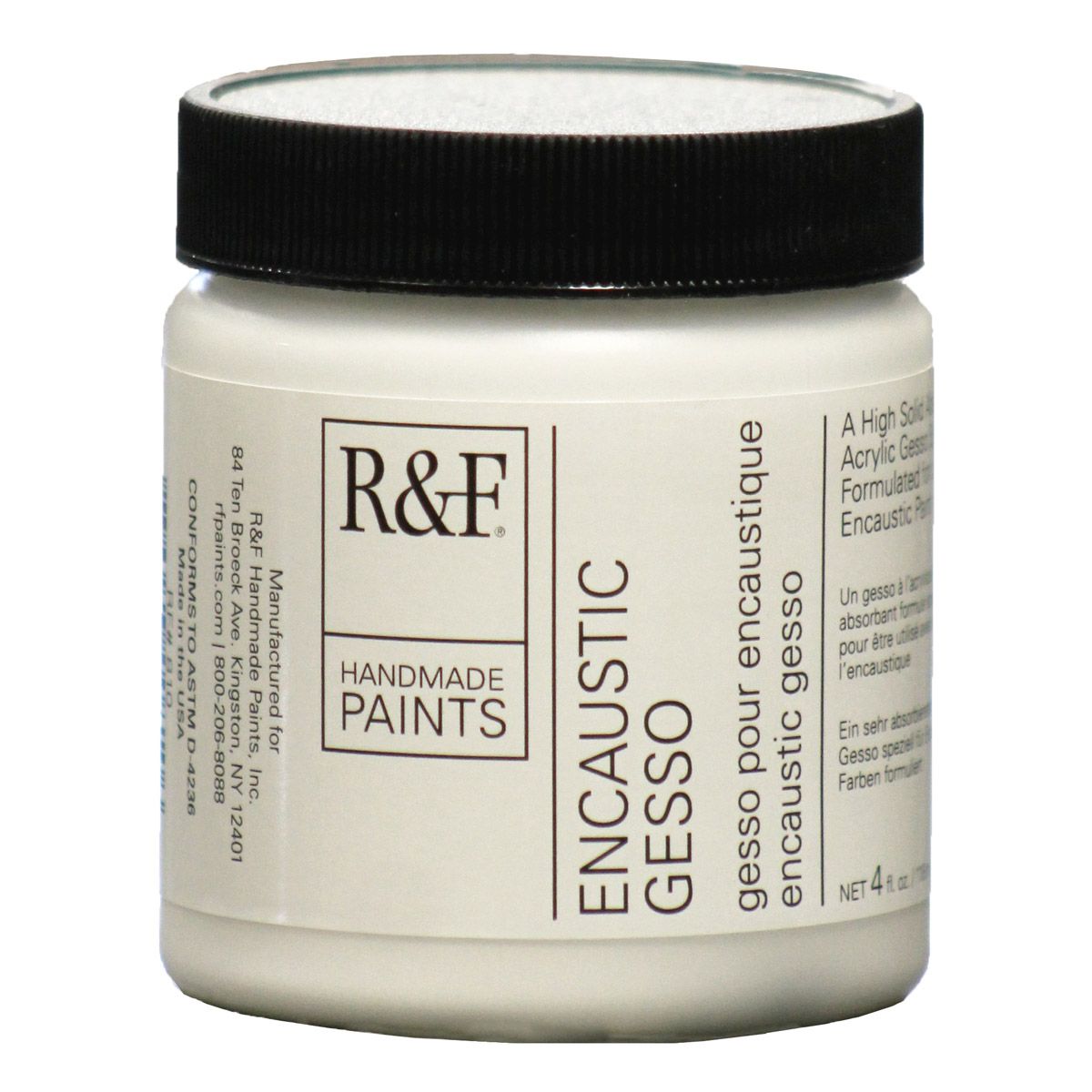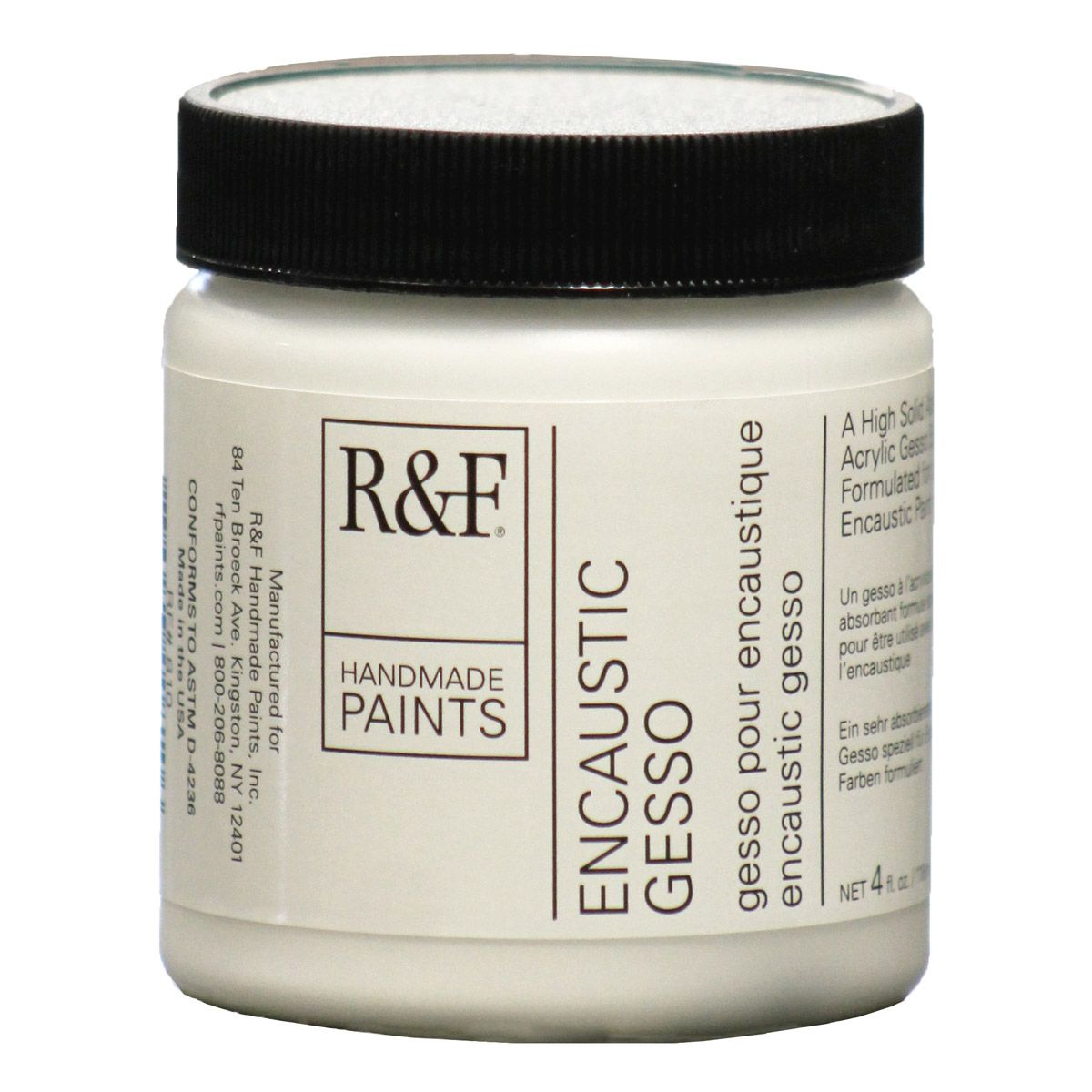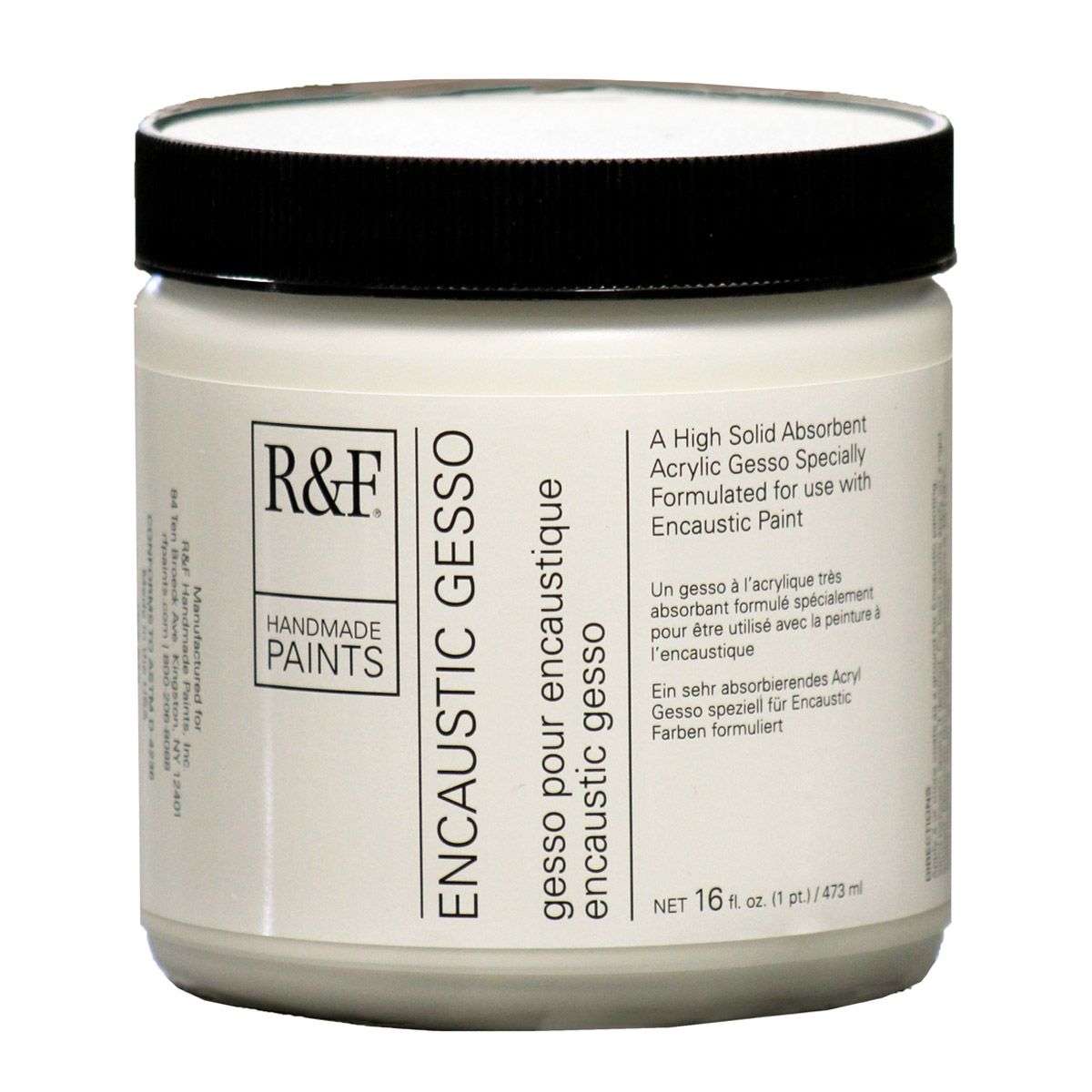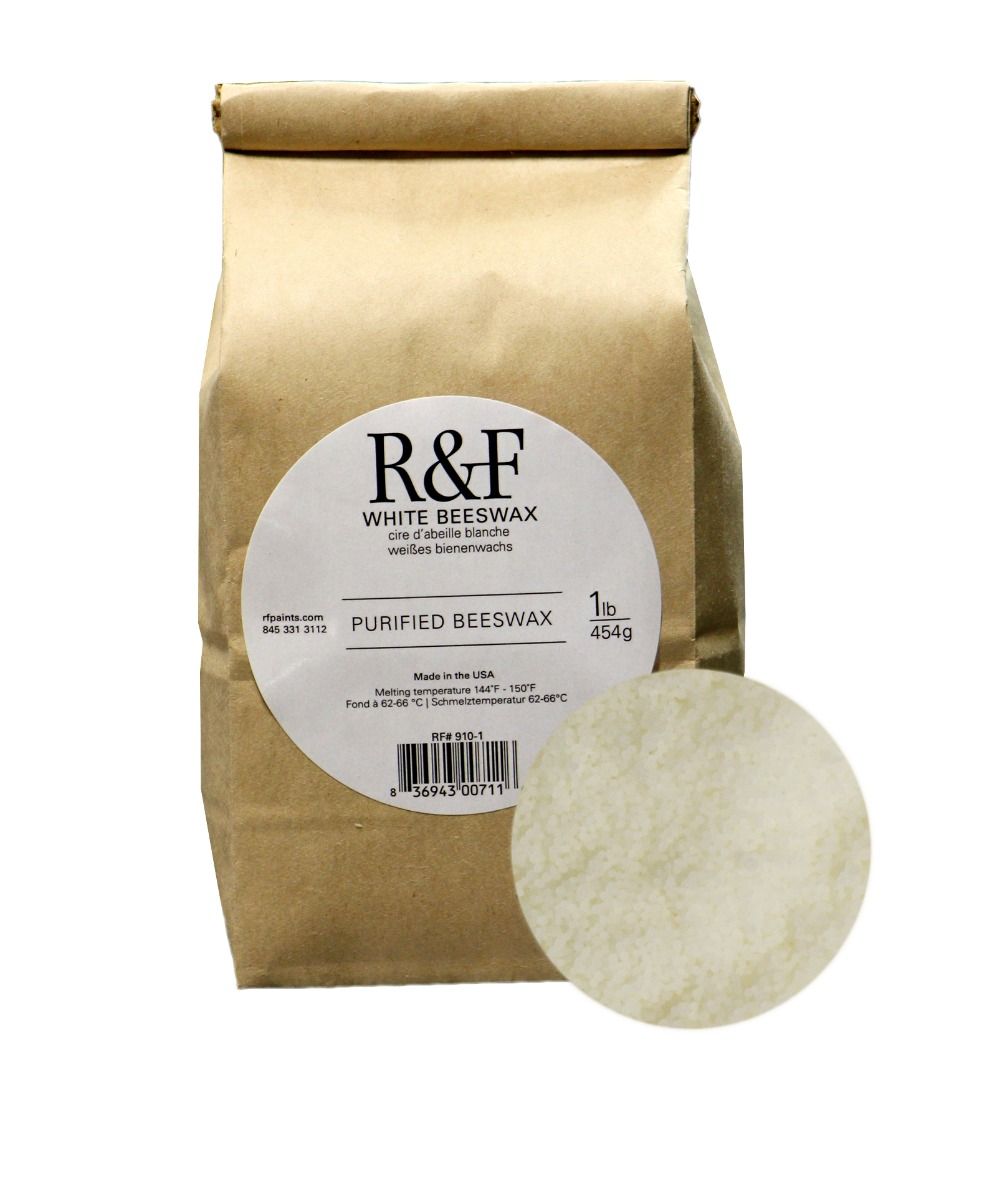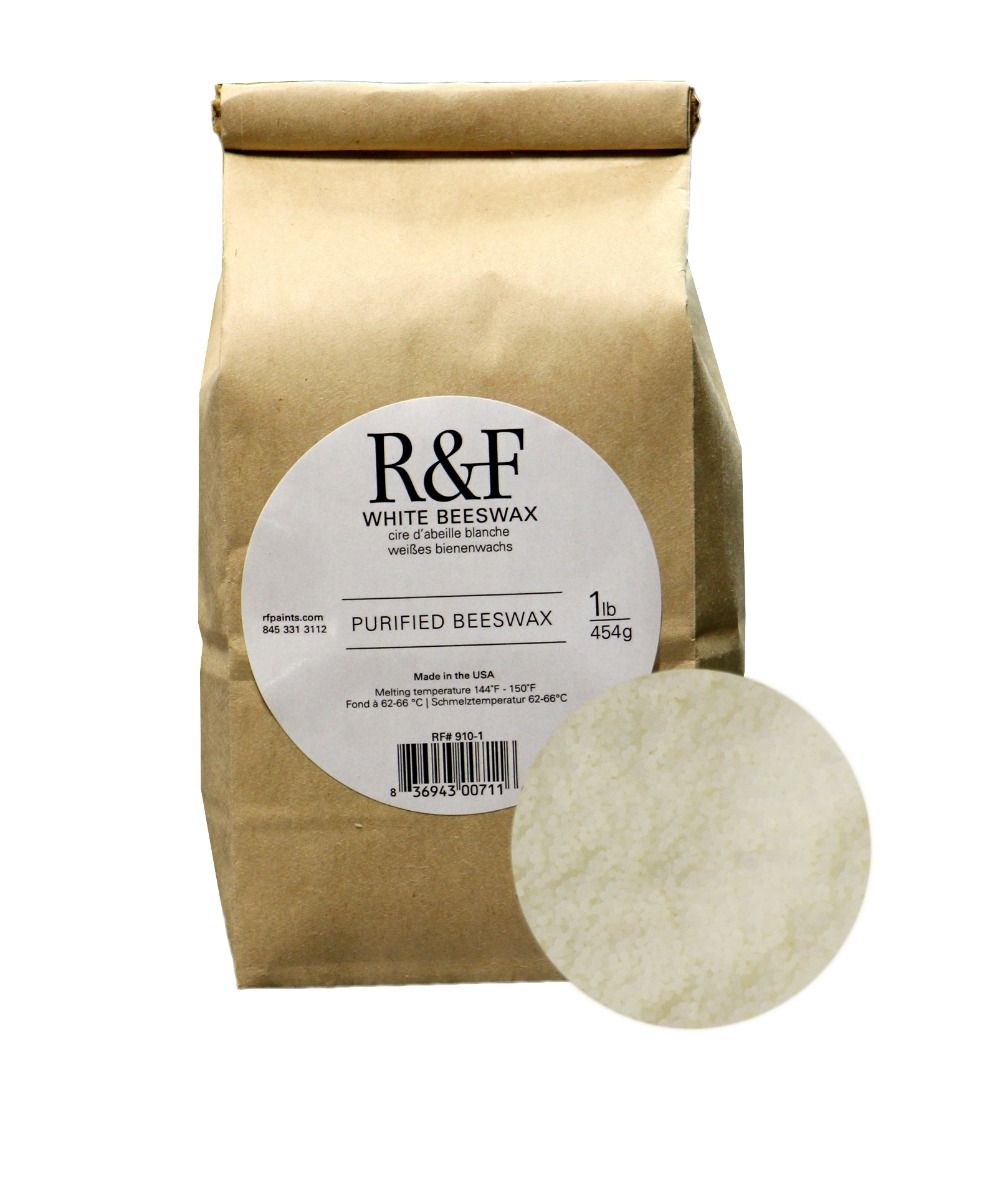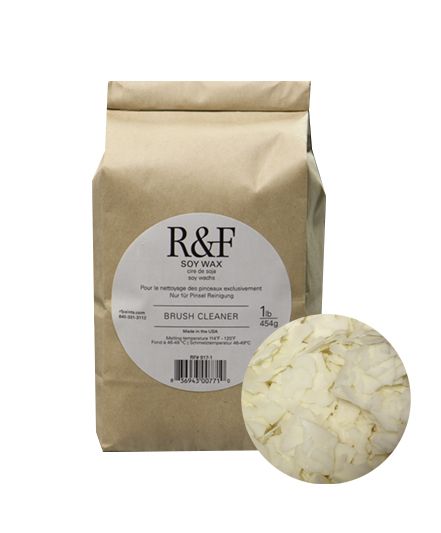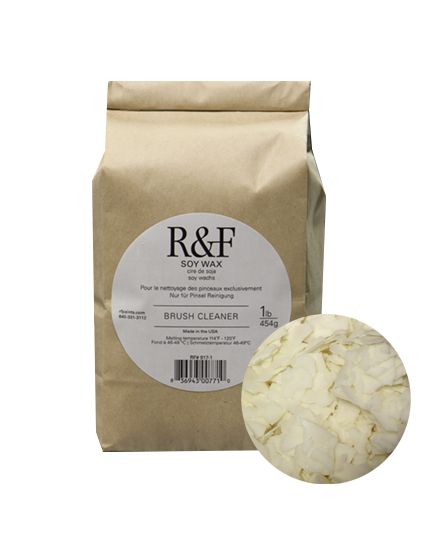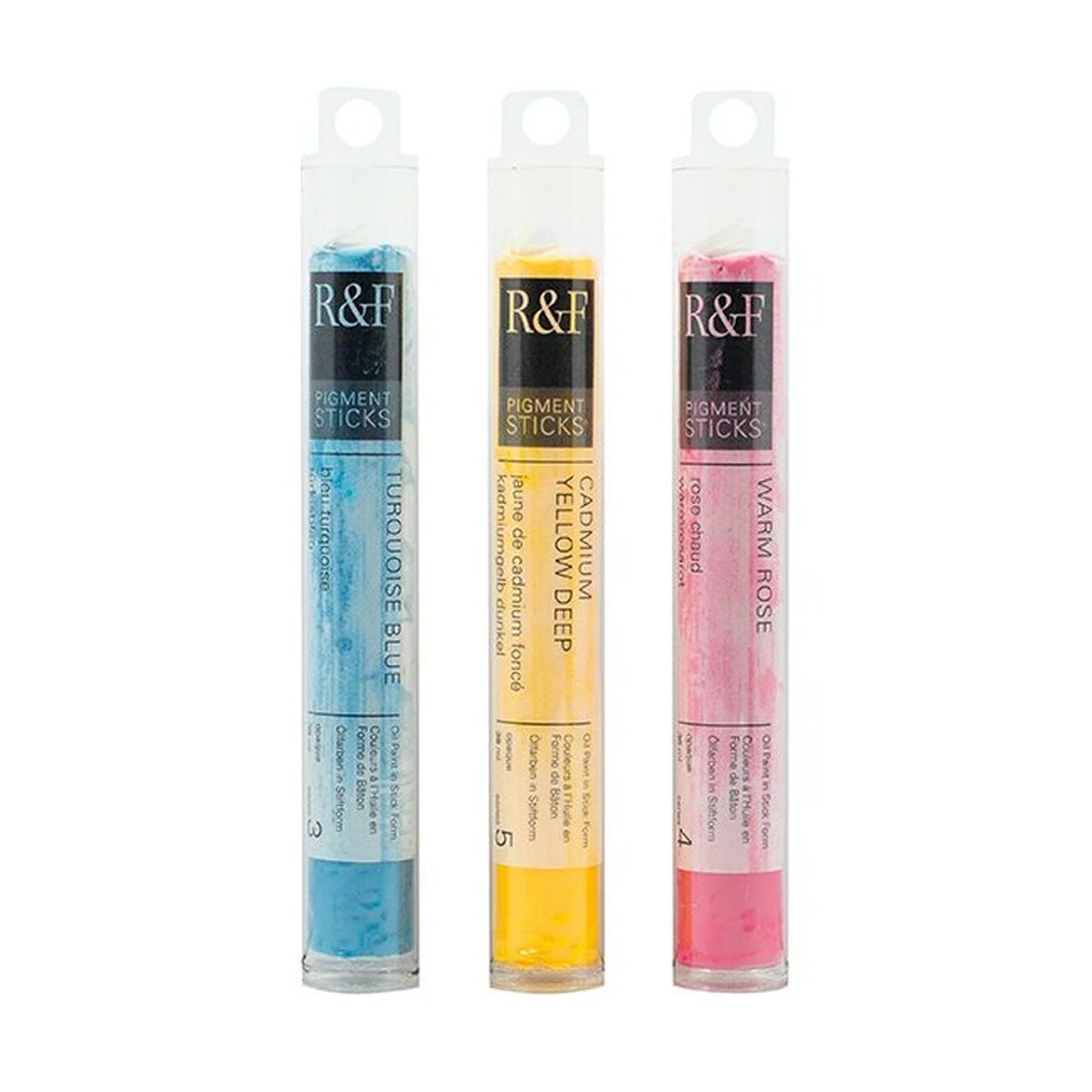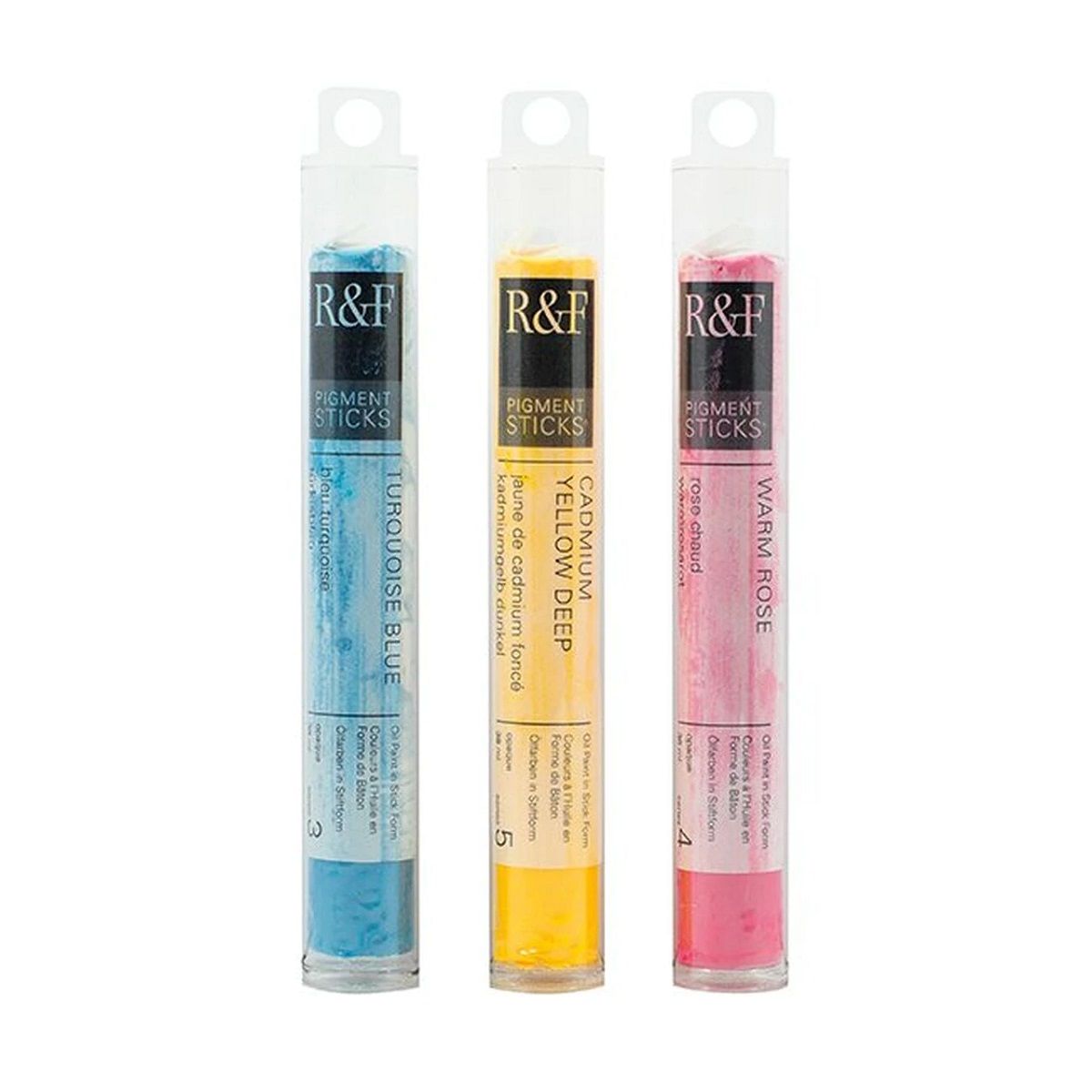R&F Oil Pigment Stick, Neutral Grey Pale 38ml
R&F Pigment Stick - Neutral Grey Pale, 38 ml
Value is similar to pale tints like Cerulean Extra Pale and Caledon Green. Much more complex undertones than from mixed black and white.
Pigment Information: PW6-Titanium White; PB28-Cobalt Blue; PBr7-Raw Umber; PW4-Zinc White
- Paint Lines: Pigment Stick
- Opacity: Opaque
- Pigment Stick Drying Rate: Fast
- Classification: Mixed
- Chemical Composition: Natural earth, Cobalt blue, Zinc-titanium white
- Safety Information: Conforms to ASTM D-4236
Safety Warnings: This product contains cobalt, a chemical known to the State of California to cause cancer.
R&F Pigment Stick - Neutral Grey Pale, 38 ml
Value is similar to pale tints like Cerulean Extra Pale and Caledon Green. Much more complex undertones than from mixed black and white.
Pigment Information: PW6-Titanium White; PB28-Cobalt Blue; PBr7-Raw Umber; PW4-Zinc White
- Paint Lines: Pigment Stick
- Opacity: Opaque
- Pigment Stick Drying Rate: Fast
- Classification: Mixed
- Chemical Composition: Natural earth, Cobalt blue, Zinc-titanium white
- Safety Information: Conforms to ASTM D-4236
Safety Warnings: This product contains cobalt, a chemical known to the State of California to cause cancer.
Pigment Name: PW6-Titanium White
Classification: Synthetic Inorganic
Chemical Composition: Titanium dioxide
Properties
Titanium White is the most brilliant of the white pigments. It is considered an all-purpose oil colour useful in all techniques and the best all-around white. Its masstone is neither warm nor cool, placing it somewhere between Lead White and Zinc White. It is less prone to cracking and yellowing than Lead White, but it still yellows easily. Titanium White dries slowly in oil form, more slowly than Lead White but more quickly than Zinc White. It is opaque in oil and acrylic forms and semi-opaque in watercolour form. This pigment has good chemical stability, and its tinting strength is superior to both Lead White and Zinc White.
Permanence
Titanium White has excellent permanence and lightfastness.
Toxicity
Titanium dioxide is highly stable and is regarded as completely non-toxic. Animal studies do not indicate that it is absorbed biologically, even after long periods of exposure. The primary safety concern is with the inhalation of fine pigment dust particles.
History
Titanium is the ninth most abundant element in the Earth's crust. However, mineral deposits that are economical to mine are less common. Titanium dioxide was first discovered in 1821, although it could not be mass-produced until 1919. Widespread use of the pigment began in the 1940s. Since that time, it has become the most commonly used white pigment. The name comes from the Latin word Titan, the name for the elder brother of Kronos and the ancestor of the Titans, and the Greek word tito, meaning day or sun.
Pigment Name: PB28-Cobalt Blue
Classification: Synthetic Inorganic
Chemical Composition: Cobalt (II) oxide + aluminum oxide
Properties
Cobalt blue is a semi-transparent pigment with low to moderate tinting strength. When it dries, it appears lighter and less saturated. Pigment particles are large and grainy. Differences in how the pigment is ground and mixed lead to considerable differences in its performance among various manufacturers.
Permanence
Cobalt blue is absolutely lightfast and extraordinarily stable. The stability of cobalt salts at high temperatures makes them the standard for blues used in ceramics and glassware.
Toxicity
Cobalt salts are toxic. Avoid respiratory and skin contact. Soluble cobalt may cause irritation and allergic reaction through contact with skin. It is considered a possible carcinogen.
History
Since ancient times, smalt blue has been used to colour glass and ceramics. Cobalt salts, which give smalt its characteristic blue colour, were identified in the 18th century. Techniques for manufacturing Cobalt Blue, a chemically pure salt of cobalt and aluminum oxide, were developed in 1802.
Pigment Name: PBr7-Raw Umber
Classification: Synthetic Inorganic, Earth
Chemical Composition: Hydrated iron oxide
Properties
Raw Umber is a cool, transparent brown ranging from yellowish-brown to greenish-brown. It has surprisingly good tinting strength and a high opacity level, mixes well with greens, and quickly dries in oil form. It has excellent colour properties and can create a variety of subtle, clear tints when combined with white. It grays when mixed with blue and white. Raw Umber can tend towards chalkiness in dark mixes in oil form.
Permanence
Raw Umber has excellent permanence.
Toxicity
Raw Umber itself is considered non-toxic. If contaminated by manganese compounds, it may be highly toxic if inhaled and moderately toxic if ingested.
History
This pigment comes from the Latin word umbra, meaning shadow or shade. Its full name is listed as terra di ombra, meaning earth of shadow/shade, due to its original extraction from the area of Umbria, Italy. It has been used as a pigment since prehistoric times. Currently, the finest umber comes from Cyprus.
Pigment Name: PW4-Zinc White
Classification: Synthetic Inorganic
Chemical Composition: Zinc (II)-oxide
Properties
Zinc White is the coolest white and has a cold, clean masstone and a slightly bluish tint. It has less hiding power and is more transparent than other whites. It dries slowly and is suitable for painting wet into wet and glazing and scumbling. Zinc White is neither as opaque nor heavy as Lead White; its covering power is not as good and takes much longer to dry. However, it does not blacken when exposed to sulphur in the air as Lead White does. It is precious for making tints with other colours. Unmixed Zinc White dries to a brittle and dry paint film that may crack over the years, so it is unsuitable for frescoing. It is more transparent in acrylic than Titanium White and is the most commonly used white with gouache. Chinese White is a version of Zinc White appropriate for opaque watercolour techniques.
Permanence
Zinc White has excellent permanence and lightfastness.
Toxicity
Zinc White is moderately toxic if ingested and slightly toxic if inhaled.
History
Though historians are divided on who first isolated the element zinc, they agree it was first suggested as a white pigment in 1782. Zinc White was accepted as a watercolour in 1834 and was called Chinese White due to the popularity of oriental porcelain in Europe at the time. Ten years later, a suitable oil form was produced. By the early 20th century, it had improved to the point where it was an acceptable alternative to Flake White.
| Size | 38 ml |
|---|---|
| Brand | R&F Encaustic Handmade Paints |
| Country of Manufacture | United States |
| Type of Store Credit value | Select |
| Country of Origin | 836943005969 |










